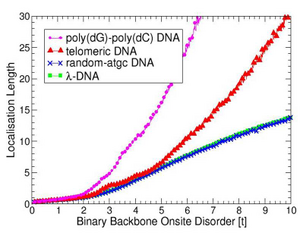Archive
|
Diffusion Limited Aggregation Link to some images of clusters being analysed. Powders Images from Warwick powder experiments. Colloid Rheology New computer simulation techniques developed to cope with hydrodynamically coupled particles have opened up the rich field of how concentrated colloids flow. The sensitivity of shear thickening to near contact interactions is a new discovery which has prompted new theoretical ideas as well as having practical consequences. A more complete theory of flow induced structure is now a priority as the phase diagram emerges from simulation. (RB) Fracture The serious theoretical work in this subject has been mainly in two dimensions, and addressing the onset of fracture. The challenge today is to understand propagating cracks and their three dimensional evolution - where we are near to completing the stability analysis. We are also trying to remedy the fact that Theoretical Physics still says almost nothing about the crack tip. (RB) Protein Folding Computer Simulation (around the world) is beginning to solve the forwards folding problem with realistic potentials. This opens up a corresponding new dimension in protein engineering: how can we design real protein sequences to fold in a given way? Direct attack on this problem has spin-off in optimisation more generally. We are investigating how efficiently to optimise a design whose performance can only be sampled statistically. (RB) Fractal Structure The days of hunting Fractal Dimensions are over, and the challenge is to find richer quantitative science in this field of beautiful images. I am exploring the information encoded in the three point correlation function, with the claim that it quantifies the linearised renormalisation group. (RB)
Non-Linear Phenomena Chaotic behaviour and turbulence are characteristic of systems with non- linear equations of motion, which recent developments, particularly in mathematics, are making increasingly accessible. There is work on the precursor instabilities to full turbulence in convective systems and plasmas. There are also links with the large non-linear systems group in the mathematics department. (GR) Periodicity and Dynamics in Non-linear Systems We have already shown that a Hamiltonian functional with suitably scaled parameters can successfully reproduce phenomena such as Wigner Crystallisation in two dimensional Jellium. An open challenge is to generalise such approaches to include Entropy, and hence predict behaviour at non-zero temperatures - with a wide range of applications including phase transitions and cross-over effects. We are also interested in generalising the Wigner Crystal work to include magnetic fields. In simpler classical reaction-diffusion systems we are taking a dynamical approach, and finding solitonic and other propagating modes. (JMD) Interacting Electron Systems The interaction between electrons is behind virtually all electronic properties which are not properly understood. The basic problem is that the electrons cannot always be treated as if they moved in the average potential of the other electrons. The group is developing the theory of interacting electrons in high temperature superconductors, looking particularly at the couplings between spin and charge excitations, crystal field effects and the magnetic ordering. (ND'A, RAR)
Electronic Structure Theory This work is based on density functional theory and relies upon high performance computing for its application to problems such as metallic magnetism and alloy physics. A strength of the work is that it is `first-principled' so that many aspects can be tested in quantitative detail by a range of experimental measurements. The group collaborates with several others both nationally and internationally, and participates actively in the large European electronic structure networks. Together with groups at Bristol, CCLRC and Imperial College a new aim is to make ab initio studies of properties of materials where strong electron correlation effects are profound, such as metal-insulator transitions, high Tc and 'exotic' superconductivity and rare-earth material properties. Here are further details of the research in this area. (JBS)
|
||||||||



